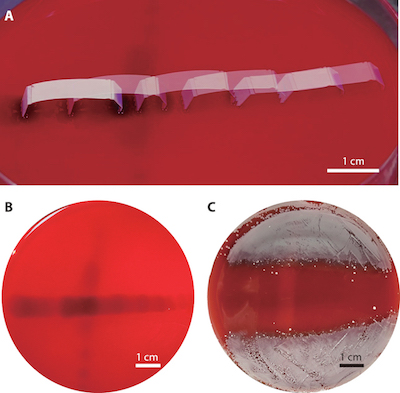Researchers create tiny robots powered only by moisture


Tiny robots that can move on their own stand to have a variety of uses in fields ranging from medicine to the military. But having to supply them with constant power is a bit of a hindrance, especially when that power poses a safety hazard -- you can't really have robots running around a human body if their batteries are at risk of exploding. However, in a new study, researchers turn to plants in order to get around this problem and the result is a tiny, inchworm-like robot that runs on humidity.
What inspired the researchers behind these little robots were plants like Pelargonium carnosum, the seeds of which can screw themselves into the ground, and pine cones that open and close depending on the humidity in order to ensure their seeds spread as far as possible. These plants are able to do this because they have multiple layers of cells, some of which are affected by moisture and some of which aren't. When the plants come in contact with moisture, those layers that are responsive to it tend to stretch or swell and since other layers don't, it results in some sort of useful motion -- either a spinning motion that can drive seeds into the ground or an open and close motion that can keep seeds in place until conditions are optimal for dispersal.

The researchers mimicked these plants by developing a dual-layered material made from nanofibers. When that material came in contact with moisture, one layer swelled while the other stayed the same, causing the material to move. When it dried, the moisture-responsive layer shrank back to its original state, resulting in movement in the opposite direction. And with that motion, the team was able to create tiny robots that can move along a surface kind of like an inchworm or wriggle like a snake. They researchers say such devices could be used for military or industrial applications or even in the medical world. To demonstrate, they loaded one of these "hygrobots" up with an antibiotic and had it inch across a petri dish filled with media. Afterwords, when most of the dish's contents were covered with bacteria, the strip along the bot's path was completely bacteria-free.

The research team is now working on giving these robots a greater range of motion and equipping them with sensors that will let them respond to particular gases. The study was published this week in Science Robotics.
Via: The Verge
Source: Science Robotics
via Engadget RSS Feed "http://ift.tt/2Bw29dz"
Comments
Post a Comment